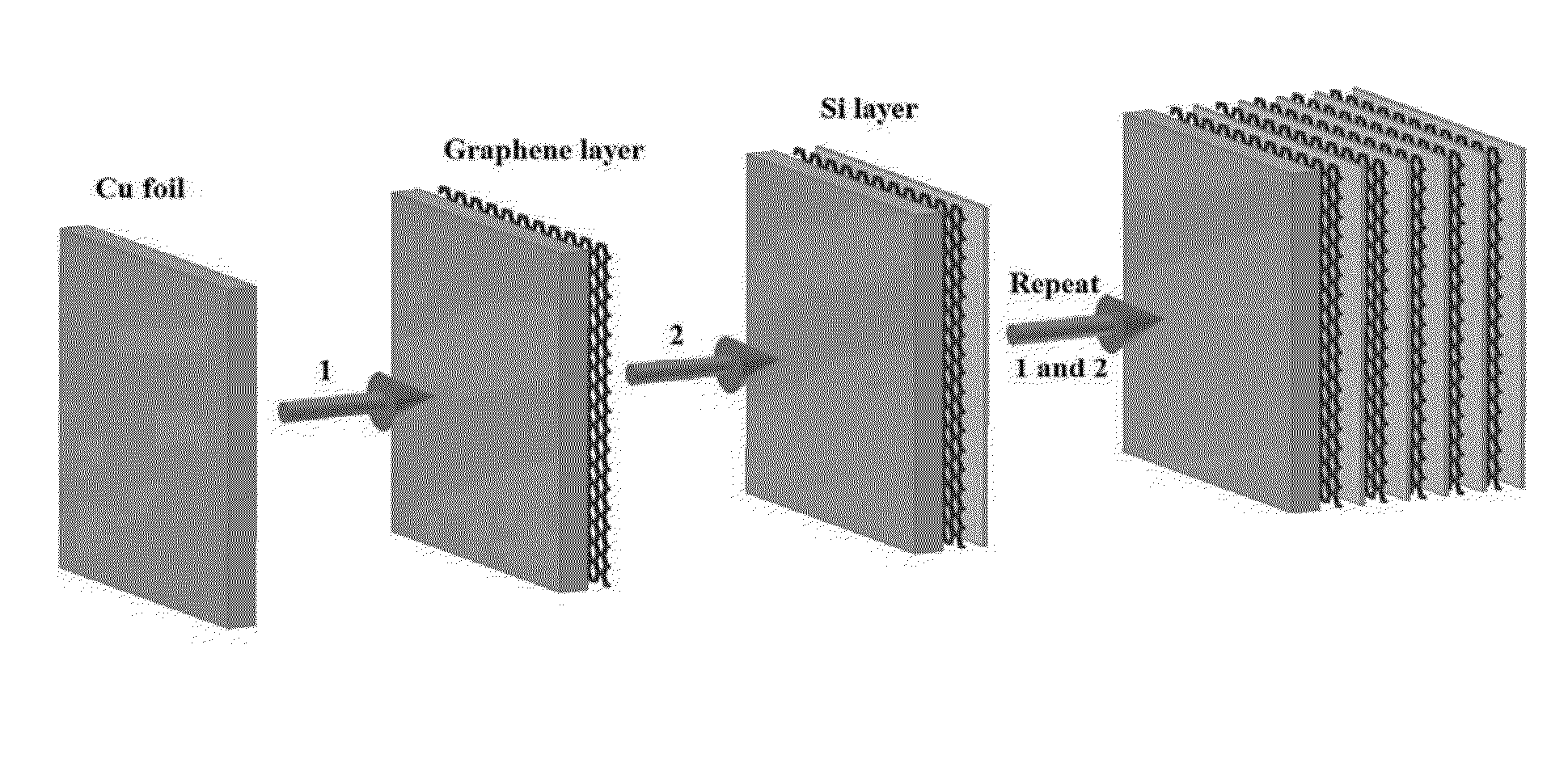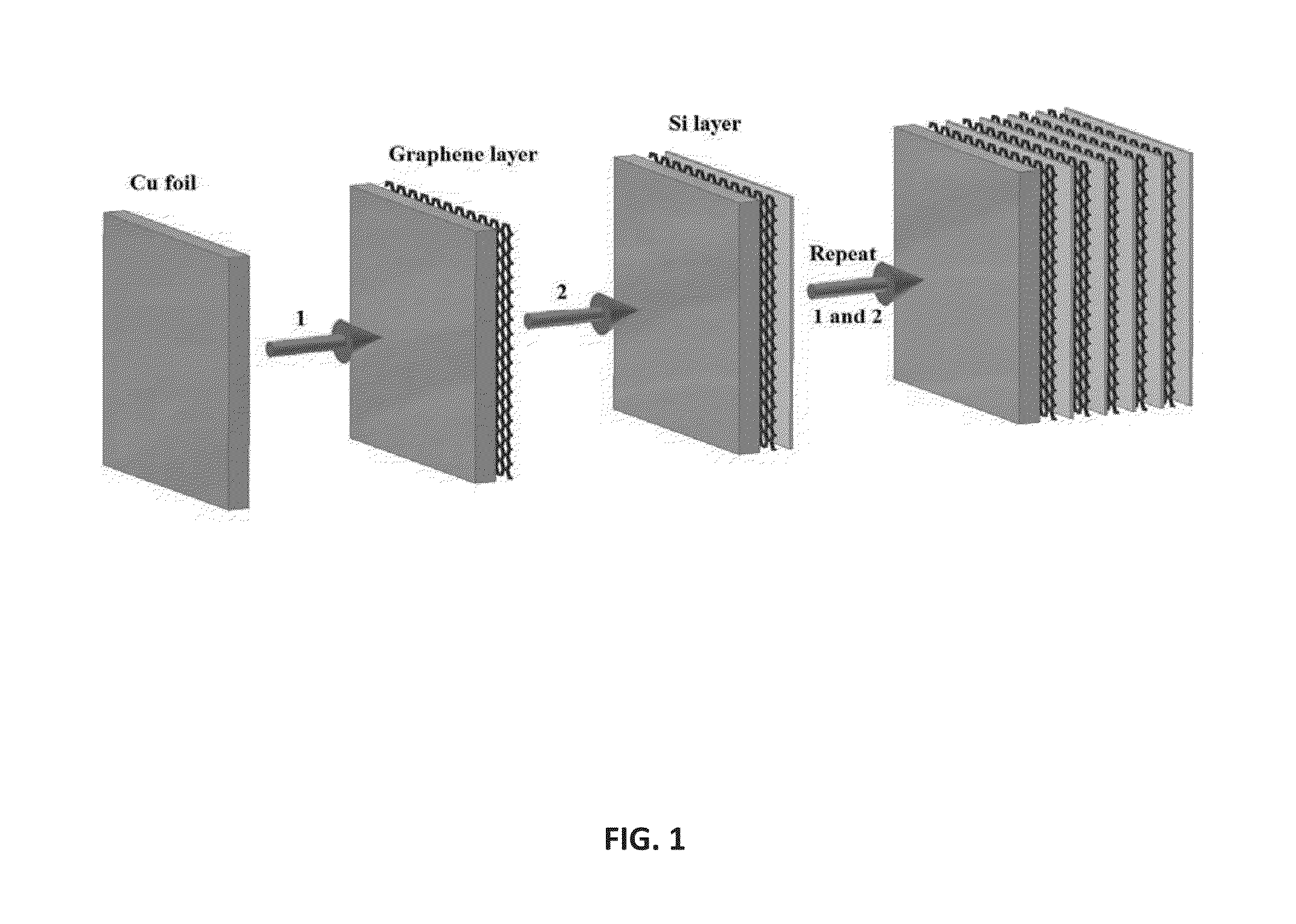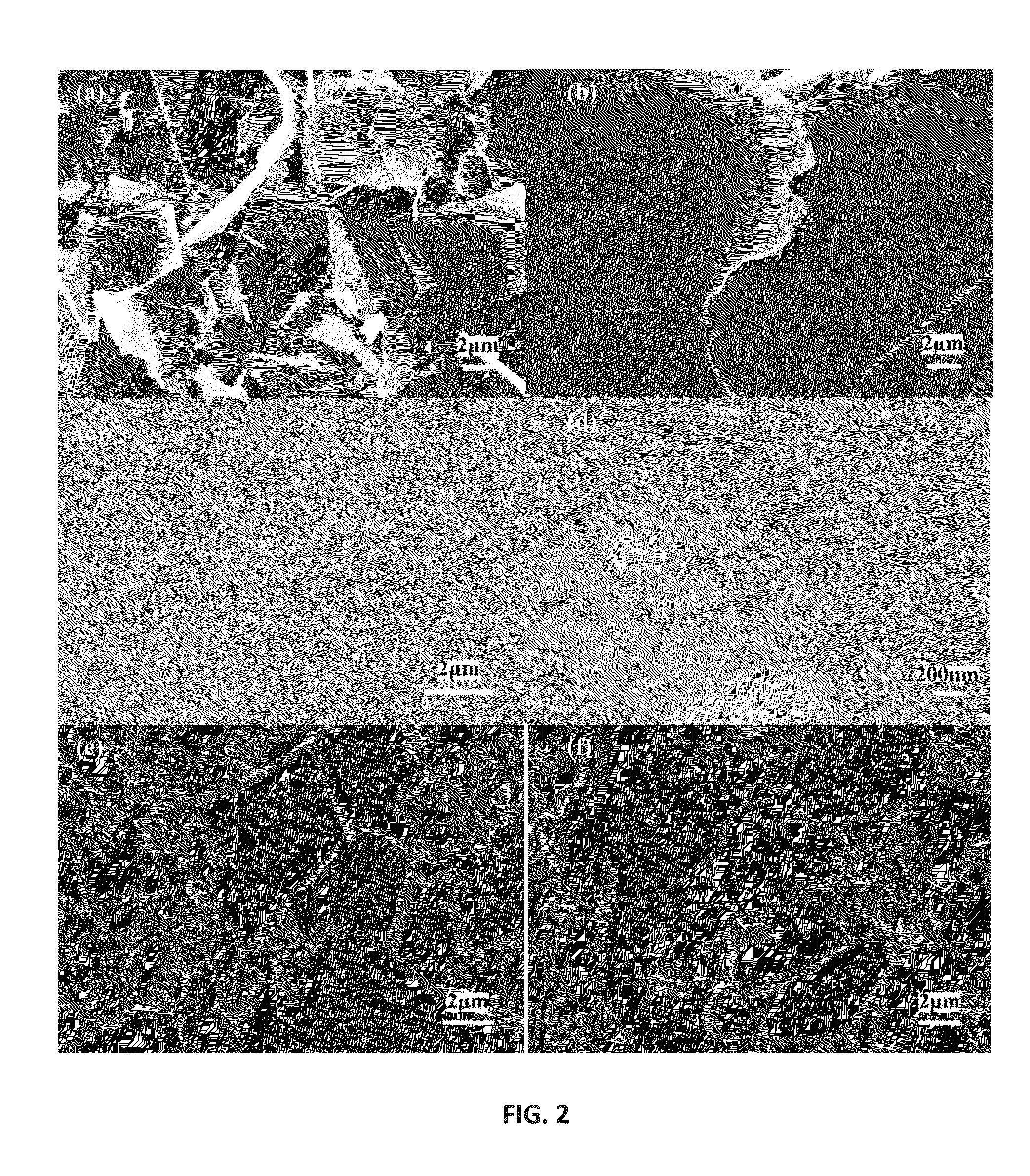Method for the preparation of graphene/silicon multilayer structured anodes for lithium ion batteries
a lithium ion battery and multi-layer structure technology, applied in the field of multi-layer composite electrodes, can solve the problems of reducing the adhesion strength of the electrode, affecting the application prospects of broad commercial applications, and affecting the ability to meet the increasing demands for advanced energy storage, so as to avoid the pulverization of si phase, effectively improve the adhesion strength
- Summary
- Abstract
- Description
- Claims
- Application Information
AI Technical Summary
Benefits of technology
Problems solved by technology
Method used
Image
Examples
Embodiment Construction
[0024]By way of the present invention, graphene / Si layer structures were prepared by a repeating process of filtering liquid-phase exfoliated graphene and the subsequent coating of each graphene layer with amorphous Si films using in one embodiment plasma enhanced chemical vapor deposition. When directly used as anodes for rechargeable lithium ion batters, these materials can deliver a large charge and discharge capacity of about 2728, and 2232 mAh g−1 respectively at the first cycle with high coulombic efficiency of 82% at 50 mAg−1. As tested, at 30 cycles, the reversible capacity is still as large as 1320 mAh g−1.
[0025]The graphene / Si multilayer structures of the invention were prepared using graphite powder, N-Methyl-2-pyrrolidone (NMP), and sodium hydroxide (NaOH) purchased from Sigma-Aldrich. Anodic aluminum oxide (AAO) membrane was obtained from Whatman Inc. (Piscataway, N.J.). In one embodiment, graphite was dispersed in NMP solvent at a concentration of 0.4 mg / ml by sonicati...
PUM
| Property | Measurement | Unit |
|---|---|---|
| voltage | aaaaa | aaaaa |
| cutoff voltage | aaaaa | aaaaa |
| coulombic efficiency | aaaaa | aaaaa |
Abstract
Description
Claims
Application Information
 Login to View More
Login to View More - R&D
- Intellectual Property
- Life Sciences
- Materials
- Tech Scout
- Unparalleled Data Quality
- Higher Quality Content
- 60% Fewer Hallucinations
Browse by: Latest US Patents, China's latest patents, Technical Efficacy Thesaurus, Application Domain, Technology Topic, Popular Technical Reports.
© 2025 PatSnap. All rights reserved.Legal|Privacy policy|Modern Slavery Act Transparency Statement|Sitemap|About US| Contact US: help@patsnap.com



